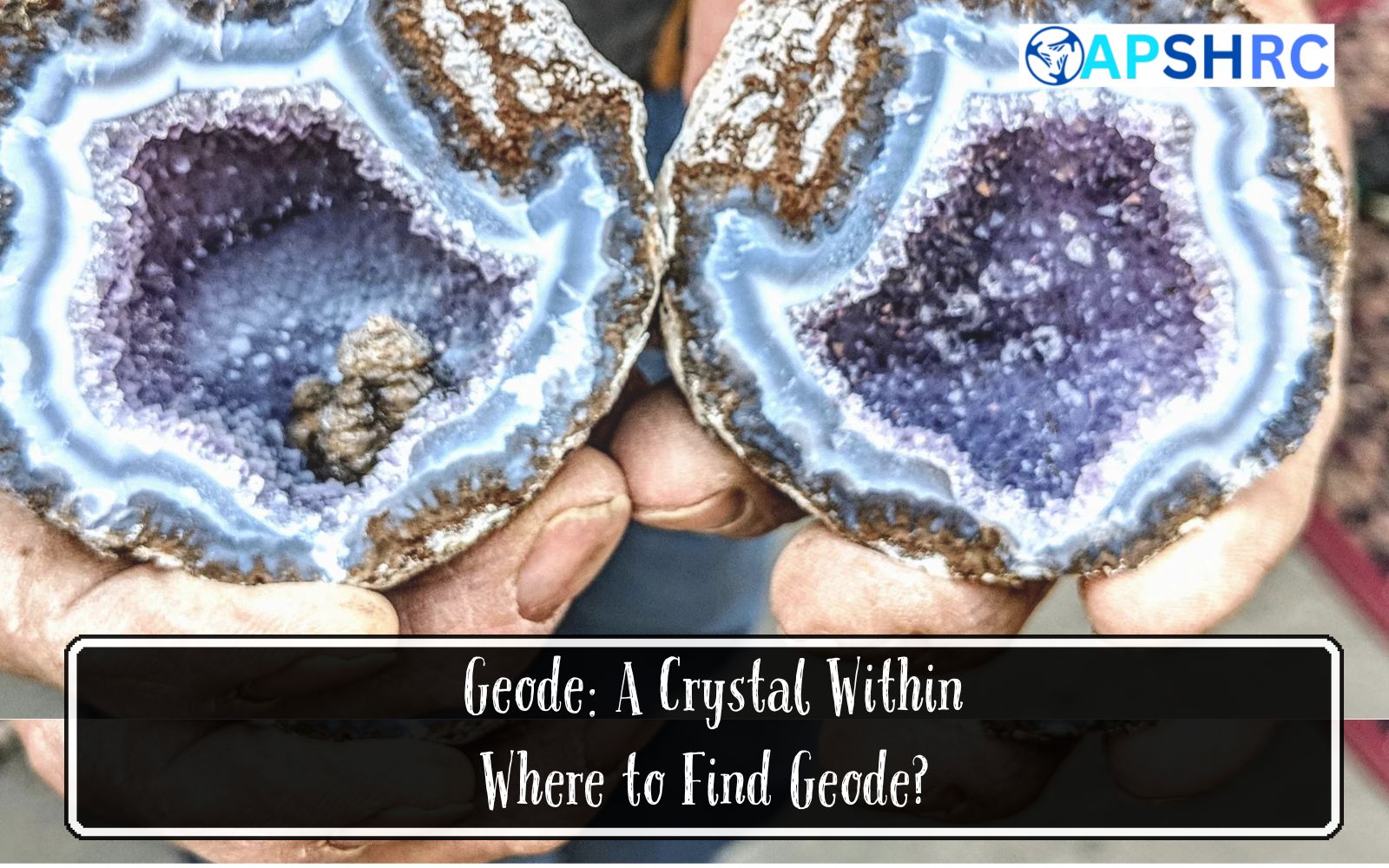Geodes aren’t anything special to look at, but once you open one you’ll see a beautiful surprise.
We live on a layer of crust that covers the world.
The oceanic layer and the continental layer make up the two layers of crust that cover the surface of the world.
We live on the continental layer above the water bodies, and the oceanic layer is beneath the oceans. We have several mountains and hills, and on these mountains we find rocks.
There are several sizes and shapes for rocks.
If we look carefully, we can find many unique shapes as well.
How to Find Geodes?
These are usually shaped like eggs and have a bumpy and rough texture.
These can be found near deserts, ash beds, riverbeds, and limestone places. It is of two types ;
- Volcanic – They have air pockets that are created when the lava cools down.
- Sedimentary – Sediments and dirt particles seep deep within it.
They are lightweight, and you can use a hammer to open them and see crystals inside them when they crack open.
They come in varying sizes and can be as small as a pea to as big as a basketball.

How Are Geodes Created?
Rocks having air pockets inside of them form geodes. This occurs frequently when lava cools around air bubbles following volcanic explosions.
There is room for groundwater to infiltrate into these areas. However, the water alone does not creates it; instead, it carries minerals that remain in the rock long after the water evaporates.
As these rocks have an air pocket within them, it takes thousands of years for minerals to fill the inside of these rocks. That’s why these rocks are so special.
It also depends on the size, as a smaller might take a few hundred years while a bigger one will take longer to form crystals inside it.
How to Identify an Unopened Geode?
There are some ways to identify an unopened one.
Follow the steps below to see if a rock is a geode or not.
- Weight Test – The easiest way to identify it is by doing a weight test. Take a rock you think is a geode and pick another rock of similar shape and size. Hold one in each hand and then carefully weigh it. It has a hollow center, it should feel lighter in comparison to the other rock.
- Sound Test – As mentioned before, these are hollow in the center, they will sound empty. When you pick up a geode, put it near your ear and listen carefully. Move the rock and see if it feels a bit empty when shaken. There will be crystals inside and they might make a sound, it will prove that you picked up the right one.
- Shape Test – These are easy to spot when you’re hunting for one. They are shaped like spherical, egg, oval, and well-rounded. But they can also be found in slightly different shapes like triangles, cylinders, hearts, teardrops, squares, etc. These are unique rocks, so you can find them in varying shapes, so pay attention when you’re looking for one.
- Texture Test – Aside from being shaped like an oblong or egg shape, the texture of these is bumpy and slightly rough. Don’t mistake a smooth rock for it, but rather look for a rock that doesn’t have any sharp shape. To one’s touch it will be a little uneven and the surface rugged.
- Origin Test – Although these are found everywhere, there are particular regions where they can be found in higher numbers. Before you go hunting for these make sure you do your research and find their exact location.
How to Break Open Geodes?
Let’s say you found yourself a couple of good ones. Now you wish to open them and see what’s hidden within, there is a particular way to open these rocks.
To ensure that the crystals inside don’t break or get ruined.
Take it and wrap a cloth around it or put it in a sock. Once it is covered, properly take a hammer and slowly but firmly hit the edges of the rocks.
Avoid applying excessive pressure to prevent it from breaking.

Where to Find Geodes in the U.S.?
A lot of individuals are interested in these and would like to own some. As the United States is a big country there are several regions where one can find these.
Some regions where they are popularly found are California, Utah, Nevada, Iowa, and Arizona.
They can be found all over the country, though so you don’t exactly need to travel to these states.
How to Find Geodes in Iowa?
Iowa is one of the regions where these can be found, the region where it can be mostly found is Iowa‘s 35-mile radius of Keokuk.
Many rock collectors refer to this area as Keokuk geodes. Geodes in this region are of many types, but quartz is the most common.
The texture of these are like a cauliflower, and are found near the southeast area of Iowa.
How to Find Geodes in California?
California has a few places where they can be found, be sure to ask for permission if these are restricted areas. Imperial County, riverside county, San Bernardino County, black hills, and slate Mountains.
These areas have more than enough for you rock collectors and make sure you carry your equipment when you go there.
How Much is a Geode Worth?
Price: 5 – 1000 $
Surprisingly enough, it can be highly costly. It may cost several hundred dollars or over a thousand dollars.
Many factors decide its price. The cost will differ significantly depending on whether the rock has been sliced open because they frequently have crystals inside of them that when properly exposed, increase in value.
They are found all over the world, so they might be in your region as well.
How to Spot a Fake Geode?
Their surface is always going to be uneven and rough. It’ll be roundish in shape and sound hollow.
If the surface is too smooth or shaped with edges it might not be a geode. It could be some other rock.
Make sure to examine things like surface and weight, these are the two ways to test.
FAQS on Geode
How do you find a geode?
The best places to find geodes easily are near basalt rocks, limestone areas, ash beds, and riverbeds.
How to Spot a Fake Geode?
If the surface is too smooth or shaped with edges it might not be a geode.
What does the outside of geodes look like?
The exterior of geodes is oval or oblong-shaped with a bumpy texture.
How do you know if there’s a geode in the rock?
It’s easy to determine if you have a geode by checking its external traits like shape, size, weight, texture, sound, and origin.
How Much is a Geode Worth?
Usually, geodes sell from $5 to $1,000.



